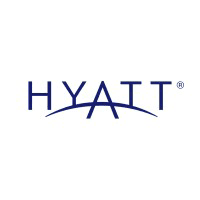
Courtyard by Marriott
How much does Courtyard by Marriott cost?
Initial Investment Range
$14,853,210 to $40,502,610
Franchise Fee
$161,300 to $241,200
The franchisee will establish and operate a Courtyard by Marriott select-service hotel.
Enjoy our partial free risk analysis below
Unlock the full risk analysis to access 9 more categories covering 100+ risks.
Courtyard by Marriott March 31, 2025 FDD Risk Analysis
Free FDD Library AI Analysis Date: August 22, 2025
DISCLAIMER: Not Legal Advice - For Informational Purposes Only. Consult With Qualified Franchise Professionals.
Franchisor Stability Risks
Start HereDisclosure of Franchisor's Financial Instability
Low Risk
Explanation
This specific risk was not identified in the FDD package. The franchisor, MIF, L.L.C., provided audited financial statements in Exhibit J which show positive net income and substantial positive members' equity for the past three fiscal years. An independent auditor's report did not express any doubts about the company's ability to continue as a going concern. Strong financials suggest the franchisor can support the system.
Potential Mitigations
- A review of the franchisor's financial statements with your accountant is a crucial step in due diligence.
- Understanding the franchisor's financial health can provide insight into their ability to support you, a topic to discuss with your business advisor.
- Your attorney can help you understand any financial performance-related disclosures or risk factors mentioned in the FDD.
High Franchisee Turnover
Low Risk
Explanation
This risk was not identified in the FDD. Item 20 data shows a very low rate of franchisee turnover. In 2024, only 6 out of 901 franchised outlets ceased operations for reasons like termination, non-renewal, or other cessations. This low attrition rate generally indicates a stable and healthy franchise system. High turnover can be a red flag for systemic problems, so its absence here is a positive indicator.
Potential Mitigations
- An accountant can help you analyze the tables in Item 20 to calculate the actual annual franchisee turnover rate.
- It is highly recommended to contact a significant number of former franchisees from the list in Exhibit N to understand their reasons for leaving.
- A discussion with your business advisor can help put the disclosed turnover rates into a broader industry context.
Rapid System Growth
Low Risk
Explanation
This risk was not identified in the provided FDD. Item 20 tables show a mature system with steady, not excessively rapid, growth in the number of franchised outlets over the last three years. This suggests that the franchisor's support infrastructure is not likely to be overstretched. A risk can arise if a franchisor expands too quickly, potentially diluting the support available to each franchisee.
Potential Mitigations
- Your business advisor can help assess if the franchisor's growth rate is sustainable relative to its size and resources.
- Speaking with franchisees who opened at different times can provide insight into the consistency of franchisor support.
- An analysis of the franchisor's financial statements with your accountant can reveal if they are investing in support infrastructure to match growth.
New/Unproven Franchise System
Low Risk
Explanation
This risk was not found. The franchisor, MIF, L.L.C. (MIF), and its parent, Marriott International, Inc. (MII), are well-established entities. Item 1 indicates the Courtyard brand has been operating since 1983 and franchising since 1990. The system is mature, with over 1,000 hotels operating. A new or unproven system would present higher risks due to a lack of established brand recognition and operational track record.
Potential Mitigations
- When evaluating any franchise, it is prudent to have a business advisor help you assess the franchisor's history and the maturity of its systems.
- An attorney can help you understand the operational history as disclosed in Item 1 of the FDD.
- Contacting early adopters in a franchise system can provide valuable perspectives on its development and stability.
Possible Fad Business
Low Risk
Explanation
This risk does not appear to be present. The Courtyard by Marriott brand is a long-established concept in the select-service hotel industry, operating since 1983. This indicates a history of sustained consumer demand rather than a dependency on a short-term trend. A business based on a fad carries a higher risk of declining consumer interest over the long term of the franchise agreement.
Potential Mitigations
- A business advisor can help you research the long-term market trends for any industry you consider entering.
- It is important to evaluate a brand's history of innovation and adaptation to changing consumer preferences.
- Your financial advisor can help you assess the long-term viability and economic resilience of a business concept.
Inexperienced Management
Low Risk
Explanation
This risk was not identified. FDD Item 2 details the business experience of the executive officers and directors of the franchisor's parent, Marriott International, Inc. (MII). The management team consists of individuals with extensive, long-term careers in the lodging and hospitality industry, including substantial experience with the Marriott family of brands. Inexperienced management can pose a risk by failing to provide adequate support or strategic direction.
Potential Mitigations
- A thorough review of the backgrounds of the key management personnel listed in FDD Item 2 is a critical due diligence step.
- Discussing the quality of management and support with current franchisees provides valuable real-world insight.
- A business advisor can help you assess whether the management team's experience is relevant to the specific franchise concept.
Private Equity Ownership
Low Risk
Explanation
The franchisor, MIF, L.L.C. (MIF), is a wholly-owned subsidiary of Marriott International, Inc. (MII), a publicly-traded corporation, not a private equity firm. While public companies also focus on shareholder returns, the typical risks associated with private equity ownership, such as a focus on short-term exit strategies that may not align with franchisees' long-term interests, are not directly applicable here.
Potential Mitigations
- It is always wise to have your attorney investigate the ownership structure of the franchisor, as detailed in FDD Item 1.
- Understanding the ownership history can provide context for the franchisor's long-term strategy, a topic to review with your business advisor.
- Contacting franchisees can reveal how changes in ownership or corporate structure have impacted the system in the past.
Non-Disclosure of Parent Company
Low Risk
Explanation
This risk was not identified. FDD Item 1 clearly discloses that the franchisor, MIF, L.L.C., is a subsidiary of Marriott International, Inc. (MII). Item 21 provides audited financial statements for MIF, L.L.C. While the parent's financials are not included, the franchisor entity itself appears to be financially robust, and there is no parent guarantee of its performance, which would be a primary trigger for requiring parent financials.
Potential Mitigations
- Your attorney should confirm whether the franchisor is a subsidiary and determine if a parent guarantee exists.
- If a parent company's financial health is critical to the franchise, insist on reviewing their financial statements with your accountant.
- Understanding the full corporate structure is key to assessing where the ultimate responsibility for support lies.
Predecessor History Issues
Low Risk
Explanation
This risk was not identified in the FDD. Item 1 indicates a long and continuous operating history for the Courtyard by Marriott brand under Marriott and its affiliates. There are no predecessors disclosed from which the franchisor acquired the system's assets. A complex or problematic history with predecessors can sometimes hide past issues with a franchise system, so its absence is a positive factor.
Potential Mitigations
- A close review of Item 1 of the FDD with your attorney is important to understand the full history of the franchisor and the brand.
- When a predecessor is involved, researching their history and reputation can be a valuable due diligence step.
- Discussing the brand's history with long-term franchisees can provide important context.
Pattern of Litigation
High Risk
Explanation
Item 3 discloses significant litigation against the franchisor's parent, Marriott International, Inc. (MII), related to a major data breach on a different system (Starwood), as well as litigation concerning resort fees and alleged antitrust violations. While not all cases directly involve franchisees, the sheer volume and serious nature of these legal challenges create potential reputational risks for the entire system and indicate areas of significant operational and legal scrutiny for the parent company.
Potential Mitigations
- It is critical to have your franchise attorney thoroughly analyze the nature, status, and potential implications of all litigation disclosed in Item 3.
- Consider the potential for reputational harm to the brand from these legal issues when making your investment decision.
- Discuss the franchisor's legal history with current franchisees to gauge its impact on their businesses.
Disclosure & Representation Risks
Example Risk: Franchisee Financial Obligations
Blue Risk
Explanation
This risk involves the financial obligations that a franchisee must meet, including initial fees, ongoing royalties, and other required payments. Understanding these obligations is crucial for long-term success.
Potential Mitigations
- Carefully review the Franchise Disclosure Document (FDD) and consult with a franchise attorney to fully understand all financial commitments before signing.
- Conduct regular risk assessments
- Implement monitoring and reporting systems
Unlock Full Risk Analysis
Purchase the complete risk review to see all 102 risks across all 10 categories.
Financial & Fee Risks
Example Risk: Franchisee Financial Obligations
Blue Risk
Explanation
This risk involves the financial obligations that a franchisee must meet, including initial fees, ongoing royalties, and other required payments. Understanding these obligations is crucial for long-term success.
Potential Mitigations
- Carefully review the Franchise Disclosure Document (FDD) and consult with a franchise attorney to fully understand all financial commitments before signing.
- Conduct regular risk assessments
- Implement monitoring and reporting systems
Unlock Full Risk Analysis
Purchase the complete risk review to see all 102 risks across all 10 categories.
Legal & Contract Risks
Example Risk: Franchisee Financial Obligations
Blue Risk
Explanation
This risk involves the financial obligations that a franchisee must meet, including initial fees, ongoing royalties, and other required payments. Understanding these obligations is crucial for long-term success.
Potential Mitigations
- Carefully review the Franchise Disclosure Document (FDD) and consult with a franchise attorney to fully understand all financial commitments before signing.
- Conduct regular risk assessments
- Implement monitoring and reporting systems
Unlock Full Risk Analysis
Purchase the complete risk review to see all 102 risks across all 10 categories.
Territory & Competition Risks
Example Risk: Franchisee Financial Obligations
Blue Risk
Explanation
This risk involves the financial obligations that a franchisee must meet, including initial fees, ongoing royalties, and other required payments. Understanding these obligations is crucial for long-term success.
Potential Mitigations
- Carefully review the Franchise Disclosure Document (FDD) and consult with a franchise attorney to fully understand all financial commitments before signing.
- Conduct regular risk assessments
- Implement monitoring and reporting systems
Unlock Full Risk Analysis
Purchase the complete risk review to see all 102 risks across all 10 categories.
Regulatory & Compliance Risks
Example Risk: Franchisee Financial Obligations
Blue Risk
Explanation
This risk involves the financial obligations that a franchisee must meet, including initial fees, ongoing royalties, and other required payments. Understanding these obligations is crucial for long-term success.
Potential Mitigations
- Carefully review the Franchise Disclosure Document (FDD) and consult with a franchise attorney to fully understand all financial commitments before signing.
- Conduct regular risk assessments
- Implement monitoring and reporting systems
Unlock Full Risk Analysis
Purchase the complete risk review to see all 102 risks across all 10 categories.
Franchisor Support Risks
Example Risk: Franchisee Financial Obligations
Blue Risk
Explanation
This risk involves the financial obligations that a franchisee must meet, including initial fees, ongoing royalties, and other required payments. Understanding these obligations is crucial for long-term success.
Potential Mitigations
- Carefully review the Franchise Disclosure Document (FDD) and consult with a franchise attorney to fully understand all financial commitments before signing.
- Conduct regular risk assessments
- Implement monitoring and reporting systems
Unlock Full Risk Analysis
Purchase the complete risk review to see all 102 risks across all 10 categories.
Operational Control Risks
Example Risk: Franchisee Financial Obligations
Blue Risk
Explanation
This risk involves the financial obligations that a franchisee must meet, including initial fees, ongoing royalties, and other required payments. Understanding these obligations is crucial for long-term success.
Potential Mitigations
- Carefully review the Franchise Disclosure Document (FDD) and consult with a franchise attorney to fully understand all financial commitments before signing.
- Conduct regular risk assessments
- Implement monitoring and reporting systems
Unlock Full Risk Analysis
Purchase the complete risk review to see all 102 risks across all 10 categories.
Term & Exit Risks
Example Risk: Franchisee Financial Obligations
Blue Risk
Explanation
This risk involves the financial obligations that a franchisee must meet, including initial fees, ongoing royalties, and other required payments. Understanding these obligations is crucial for long-term success.
Potential Mitigations
- Carefully review the Franchise Disclosure Document (FDD) and consult with a franchise attorney to fully understand all financial commitments before signing.
- Conduct regular risk assessments
- Implement monitoring and reporting systems
Unlock Full Risk Analysis
Purchase the complete risk review to see all 102 risks across all 10 categories.
Miscellaneous Risks
Example Risk: Franchisee Financial Obligations
Blue Risk
Explanation
This risk involves the financial obligations that a franchisee must meet, including initial fees, ongoing royalties, and other required payments. Understanding these obligations is crucial for long-term success.
Potential Mitigations
- Carefully review the Franchise Disclosure Document (FDD) and consult with a franchise attorney to fully understand all financial commitments before signing.
- Conduct regular risk assessments
- Implement monitoring and reporting systems
Unlock Full Risk Analysis
Purchase the complete risk review to see all 102 risks across all 10 categories.










